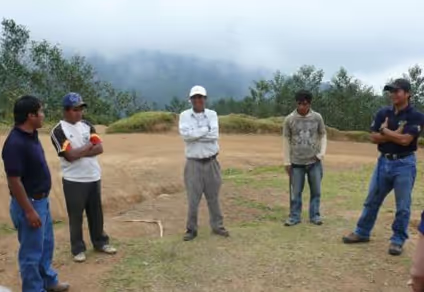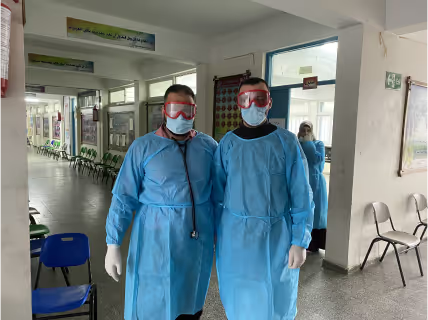Bio-rights: linking community- and ecosystem-based approaches to disaster risk reduction

Project overview
A financial incentive mechanism that unites community and ecosystem based Disaster Risk Reduction measures.
Project solution
This project offers [specific solution or intervention] to tackle [challenge]. By implementing [strategies, tools, or innovations], the project aims to achieve [desired outcomes]. The approach is designed to [specific actions or methods] to bring about meaningful change in [community, region, or issue area].
Expected outcomes
This project aims to achieve [specific outcomes], such as [measurable results, improvements, or changes]. The expected impact includes [benefits to the target community, advancements in research or innovation, or long-term effects]. By the end of the project, we anticipate [specific changes or milestones] that will contribute to [broader goals or objectives].
WHAT IS THE HUMANITARIAN NEED?
The restoration of ecosystems and their functions (erosion control, water regulation, storm protection), is an important yet underrated element of disaster risk reduction, that should ideally go hand in hand with other measures such as household level risk mitigation. Currently these approaches are rarely implemented in an integrated manner, and in some cases even contradict. This significantly limits current risk reduction efforts.
WHAT IS THE INNOVATIVE SOLUTION?
This project will involve communities and governments in a rewarding structure that creates incentive and means to invest in disaster prevention and mitigation measures that are conducive to sustainable livelihoods and long-term ability to cope with natural hazards, named ‘Bio-rights’. Bio-rights provides a practical answer to the request for integrated risk reduction approaches, bridging Disaster Risk Reduction with Climate Change Adaptation and Ecosystem Management and Restoration. This will contribute to the development of a new risk reduction paradigm, where humanitarian and environmental solutions are brought together.
Added Value: Bio-rights is an innovative financing mechanism that helps communities to meet their short term socio-economic vulnerability, while ensuring maintenance of the natural environment as a crucial tool in Disaster Risk Reduction.
WHAT ARE THE EXPECTED OUTCOMES?
- Through the distribution of loans for the implementation of small-scale risk mitigation measures communities increase local-level resilience;
- Lending groups repay their loan by engaging in ecosystem-based risk reduction measures, such as reforestation, protection of water resources, etc.
- Successful implementation results in conversion of the loan in a payment to the community, to be managed as a community-based revolving fund, ensuring long-term availability of capital for disaster prevention and response.
- Established community groups function as Disaster Risk Reduction committees, engaging in dialogue with government, supporting preparedness initiatives in the communities and taking action if a disaster strikes.
With these, the Bio-rights approach:
- Covers the (temporary) opportunity costs that are incurred to the conversion to a sustainable livelihoods strategy.
- Ensures conditionality: as the loans are only converted at the end of a contracting period, a strong incentive is created for delivery of long-term success.
- Offers a novel means for effective channelling of funds to the most vulnerable groups and therefore provides a basis for up-scaling and replication.
- Delivers ‘win-win’ environmental and humanitarian benefits.
Project delivery & updates
Stay up to date with the latest developments from this project. Here, you will find details on what has been delivered, resources created, and regular updates as the project progresses. Access key documents, reports, and other materials to see how the project is making an impact.
